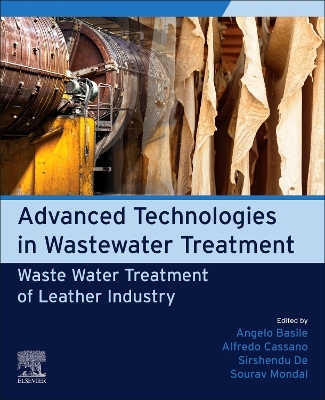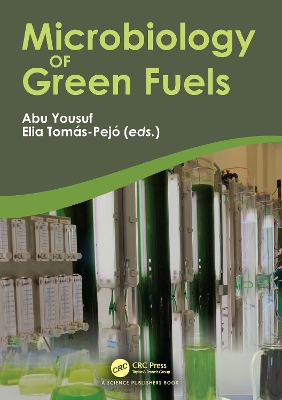Development in Waste Water Treatment Research and Processes
 portes grátis
portes grátis
Development in Waste Water Treatment Research and Processes
Applied Technologies for Clean Up of Environmental Contaminants
Shah, Maulin P.
Elsevier - Health Sciences Division
11/2024
450
Mole
Inglês
9780443136153
Pré-lançamento - envio 15 a 20 dias após a sua edição
1. Microbes in sequestration of micropollutants including microplastics
2. Microbial surfactants: The ecofriendly tools for sustainable bioremediation of petroleum and organic contaminants for environmental safety
3. Insecticides: Current status, properties, and the biological degradation strategies
4. Microplastics contamination in agricultural ecosystems: Challenges and sustainable approaches for green environment
5. Pesticides and their degradation: A microbiological perspective
6. Current status and perspectives of municipal wastewater treatment using microalgal systems
7. Biotransformation of environmental pollutants: Exploring halophilic microbial interventions
SECTION 2 Microbial-based management of resource
8. Microbee-Mineral interface (MMI): Study and assessment of abiotic biomolecules from molecular to macroscopic scale
9. Microbes in energy generation
10. Microbial fuel cell (MFC) in bioremediation, wastewater treatment, resource recovery, and bioelectricity generation: Advances, challenges, and, opportunities
11. Microbes in water treatment process
12. The role of microorganisms in energy generation
13. Microbial-based strategies for remediation of agricultural wastes
14. Microbial electrochemical technologies for the valorization of food wastes: A comprehensive review
15. Prospects of large-scale microalgae culture using industrial wastewater for biofuel production
16. Microbes in the biomining process: A nanobiotechnological perspective
SECTION 3 Rhizospheric ecology of contaminated environment
17. Role of rhizobacteria in rapid growth and phytopathogenic mitigation of Arecales
SECTION 4 Role of biofilms in environment pollution control
18. Role of biofilms in control of heavy metal pollution and subsequent control of algal blooms
19. An overview on role of biofilms in environment pollution remediation
20. Microbial biofilm in bioremediation of environmental contaminants and wastewater treatment: Challenges and opportunities
SECTION 5 Microbes as remediating agent
21. Degradation of crude oil in bioreactors by oleophilic bacteria
22. Microbes in bioremediation of heavy metals
23. Microbes in bioremediation of pesticides
24. Microbes in bioremediation of petroleum pollutants
25. Microbes in xenobiotics biodegradation
SECTION 6 Energetics of microbial processes in the polluted environment
26. An insight into the ecological toxicity triggered by anthropogenically driven heavy metal micropollutants on biotic community
SECTION 7 DNA microarray applications in environmental microbiology
27. Metagenomic and proteomic approach for bioremediation of environmental pollutants
28. Metagenomics of River Ganga: A potential approach in bioremediation
29. Strategies and methods of OMICS-based approaches in microbial environmental bioremediation
SECTION 8 Microbial biosensors for environmental monitoring
30. Microbial biosensors in environmental monitoring
31. Biosensors in heavy metal and metalloid detection: Genetic, cellular, and nanomaterial applications
1. Microbes in sequestration of micropollutants including microplastics
2. Microbial surfactants: The ecofriendly tools for sustainable bioremediation of petroleum and organic contaminants for environmental safety
3. Insecticides: Current status, properties, and the biological degradation strategies
4. Microplastics contamination in agricultural ecosystems: Challenges and sustainable approaches for green environment
5. Pesticides and their degradation: A microbiological perspective
6. Current status and perspectives of municipal wastewater treatment using microalgal systems
7. Biotransformation of environmental pollutants: Exploring halophilic microbial interventions
SECTION 2 Microbial-based management of resource
8. Microbee-Mineral interface (MMI): Study and assessment of abiotic biomolecules from molecular to macroscopic scale
9. Microbes in energy generation
10. Microbial fuel cell (MFC) in bioremediation, wastewater treatment, resource recovery, and bioelectricity generation: Advances, challenges, and, opportunities
11. Microbes in water treatment process
12. The role of microorganisms in energy generation
13. Microbial-based strategies for remediation of agricultural wastes
14. Microbial electrochemical technologies for the valorization of food wastes: A comprehensive review
15. Prospects of large-scale microalgae culture using industrial wastewater for biofuel production
16. Microbes in the biomining process: A nanobiotechnological perspective
SECTION 3 Rhizospheric ecology of contaminated environment
17. Role of rhizobacteria in rapid growth and phytopathogenic mitigation of Arecales
SECTION 4 Role of biofilms in environment pollution control
18. Role of biofilms in control of heavy metal pollution and subsequent control of algal blooms
19. An overview on role of biofilms in environment pollution remediation
20. Microbial biofilm in bioremediation of environmental contaminants and wastewater treatment: Challenges and opportunities
SECTION 5 Microbes as remediating agent
21. Degradation of crude oil in bioreactors by oleophilic bacteria
22. Microbes in bioremediation of heavy metals
23. Microbes in bioremediation of pesticides
24. Microbes in bioremediation of petroleum pollutants
25. Microbes in xenobiotics biodegradation
SECTION 6 Energetics of microbial processes in the polluted environment
26. An insight into the ecological toxicity triggered by anthropogenically driven heavy metal micropollutants on biotic community
SECTION 7 DNA microarray applications in environmental microbiology
27. Metagenomic and proteomic approach for bioremediation of environmental pollutants
28. Metagenomics of River Ganga: A potential approach in bioremediation
29. Strategies and methods of OMICS-based approaches in microbial environmental bioremediation
SECTION 8 Microbial biosensors for environmental monitoring
30. Microbial biosensors in environmental monitoring
31. Biosensors in heavy metal and metalloid detection: Genetic, cellular, and nanomaterial applications







